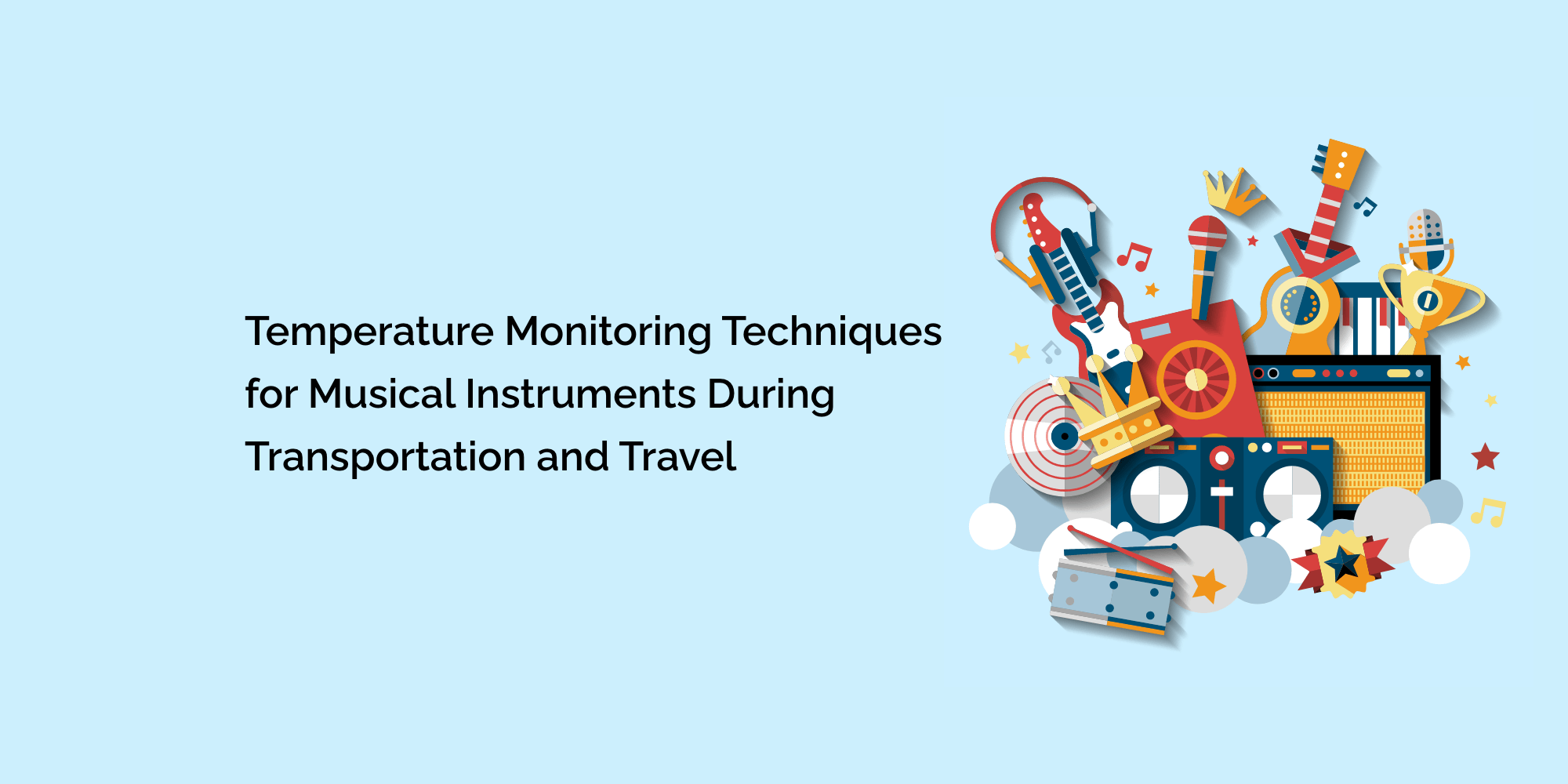For musicians, their instruments are not just objects but extensions of their creativity and passion. Musical instruments require utmost care and protection, especially during transportation and travel, as they can be susceptible to temperature fluctuations. Whether traveling to a performance venue or going on tour, musicians must be aware of the potential impact of temperature changes on their instruments' performance and condition. This blog will explore the importance of temperature monitoring during transportation and travel, the risks posed by temperature variations, and practical techniques to safeguard musical instruments from temperature-related damage.
The Impact of Temperature Changes on Musical Instruments
Musical instruments, especially those crafted from wood, are susceptible to temperature changes. Devices are typically made from wood, metal, strings, and electronics. Temperature fluctuations can affect these materials differently, leading to various consequences for musical instruments:
-
Wooden Instruments: Wooden instruments, such as violins, cellos, and guitars, are particularly vulnerable to temperature changes. Cold temperatures can cause wood to contract, leading to tuning instability, while warm temperatures can cause the wood to expand, affecting the instrument's shape and structural integrity.
-
Metal Instruments: Brass and other metal instruments, like trumpets and saxophones, can also be impacted by temperature changes. Cold temperatures can cause the metal to contract, leading to tuning issues and difficulties in playing, while heat can cause the metal to expand, affecting critical alignment and overall performance.
-
Strings: String instruments, like violins and guitars, have tensioned strings. Temperature fluctuations can impact string tension, affecting the instrument's playability and sound quality. Cold temperatures can cause lines to contract, resulting in a sharp pitch, while warm temperatures can cause them to expand, leading to a flat rise.
- Electronic Instruments: Modern electronic instruments contain sensitive electronic components, such as synthesizers and digital pianos. Extreme temperatures can cause these components to malfunction, resulting in instrument failure or diminished performance.
The Importance of Temperature Monitoring during Transportation and Travel
During transportation and travel, musical instruments are exposed to various indoor and outdoor environments. Temperature monitoring is crucial during these periods for several reasons:
-
Preventing Temperature-Related Damage: Monitoring temperature levels helps prevent damage caused by extreme temperature fluctuations. It allows musicians to take timely precautions and mitigate the risk of cracks, warping, and misalignments in their instruments.
-
Ensuring Optimal Performance: Temperature changes can impact musical instrument tuning, playability, and sound quality. By monitoring temperatures, musicians can ensure their instruments perform optimally.
-
Preserving Instrument Longevity: Musical instruments are significant investments, and their longevity is crucial for musicians. Temperature monitoring helps maintain the structural integrity of instruments, ensuring they last for generations.
- Minimizing Repair Costs: By identifying potential temperature-related issues early on, musicians can avoid costly repairs and prolong the lifespan of their instruments.
Practical Temperature Monitoring Techniques
To protect musical instruments during transportation and travel, musicians can employ a combination of practical temperature monitoring techniques:
-
Digital Temperature Sensors: Digital temperature sensors are portable and easy to use. Place a small sensor inside the instrument case or the travel container to monitor the internal temperature during transportation.
-
Temperature Data Loggers: Temperature data loggers record temperature readings over time, providing valuable data on temperature fluctuations during travel. These devices are handy when traveling long distances or through varying climates.
-
Thermocouples and Infrared Thermometers: Thermocouples and infrared thermometers allow musicians to measure the surface temperature of their instruments. They are handy for identifying potential hotspots or cold spots affecting instrument performance.
-
Smartphone Apps: Many smartphones have built-in temperature sensors. Musicians can use temperature-monitoring apps to check the ambient temperature in their surroundings and take appropriate measures to protect their instruments.
-
Climate-Controlled Instrument Cases: Investing in climate-controlled instrument cases provides additional protection during transportation. These cases regulate the internal temperature and humidity, preserving the instrument's condition.
-
Insulated Instrument Covers: For musicians traveling with woodwind or brass instruments, insulated tool covers help protect against temperature changes during travel and maintain stable playing conditions.
-
Temperature-Aware Packing: Musicians should consider the temperature of the environment they will be exposed to when packing tools for a journey. Avoid leaving instruments in vehicles for extended periods in extreme weather conditions.
-
Avoiding Direct Sunlight: Direct sunlight can cause significant temperature changes, especially when the device is inside a car or exposed to a window. Musicians should avoid leaving tools in direct sunlight to prevent potential damage.
- Hygrometers for Humidity Monitoring: Besides temperature, humidity levels can impact instruments, especially wooden ones. Musicians can use hygrometers to monitor humidity levels and ensure their devices are stored in a suitable environment.
Certainly! Here are some frequently asked questions (FAQs) related to temperature monitoring for musical instruments during transportation and travel:
How can musicians use thermocouples and infrared thermometers for temperature monitoring?
Thermocouples and infrared thermometers allow musicians to measure the surface temperature of their instruments, helping them identify potential hotspots or cold spots that may affect performance.
Are there any smartphone apps for temperature monitoring during travel?
Yes, many smartphones have built-in temperature sensors, and musicians can use temperature-monitoring apps to check the ambient temperature in their surroundings during travel.
Conclusion
Temperature monitoring during transportation and travel is vital to protecting musical instruments and ensuring optimal performance. Wood, metal, strings, and electronics in musical instruments react differently to temperature fluctuations, necessitating careful attention to their storage and exposure during transit.
By employing practical temperature monitoring techniques such as digital sensors, data loggers, and climate-controlled cases, musicians can safeguard their instruments from potential damage caused by extreme temperatures. Consistent temperature monitoring not only preserves the quality and longevity of musical instruments but also ensures that musicians can deliver captivating performances unhindered by temperature-related issues.
Remember, as musicians and caretakers of these cherished instruments, we are responsible for implementing temperature monitoring techniques during transportation and travel, allowing the beauty and soul of music to resonate through each performance.








